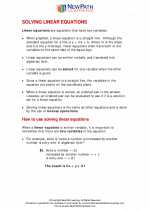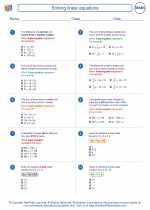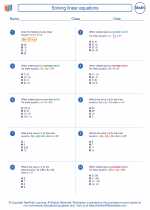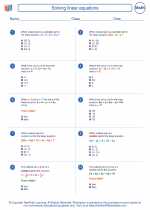Solving linear equations -> descending order
Descending Order
Descending order refers to arranging numbers or items from the largest to the smallest. This is the opposite of ascending order, which involves arranging numbers from the smallest to the largest. When arranging numbers in descending order, you start with the largest number and end with the smallest number.
Example:
Arrange the numbers 14, 7, 22, 10, and 5 in descending order:
- First, identify the largest number in the list, which is 22.
- Next, write down 22 as the first number in the descending order list.
- Repeat the process, finding the next largest number in the list, which is 14.
- Write down 14 as the second number in the descending order list.
- Continue this process until all the numbers are arranged in descending order: 22, 14, 10, 7, 5.
Study Guide:
When arranging numbers in descending order, follow these steps:
- Identify the largest number in the list.
- Write down the largest number as the first number in the descending order list.
- Repeat the process, finding the next largest number in the list.
- Write down the next largest number as the second number in the descending order list.
- Continue this process until all the numbers are arranged in descending order.
When working with decimals or fractions, compare the numbers based on their values to determine their order in descending order.
Understanding how to arrange numbers in descending order is important for organizing data and making comparisons in various mathematical and real-world scenarios.
.◂Math Worksheets and Study Guides Eighth Grade. Solving linear equations

 Worksheet/Answer key
Worksheet/Answer key
 Worksheet/Answer key
Worksheet/Answer key
 Worksheet/Answer key
Worksheet/Answer key
 Worksheet/Answer key
Worksheet/Answer key
 Worksheet/Answer key
Worksheet/Answer key
